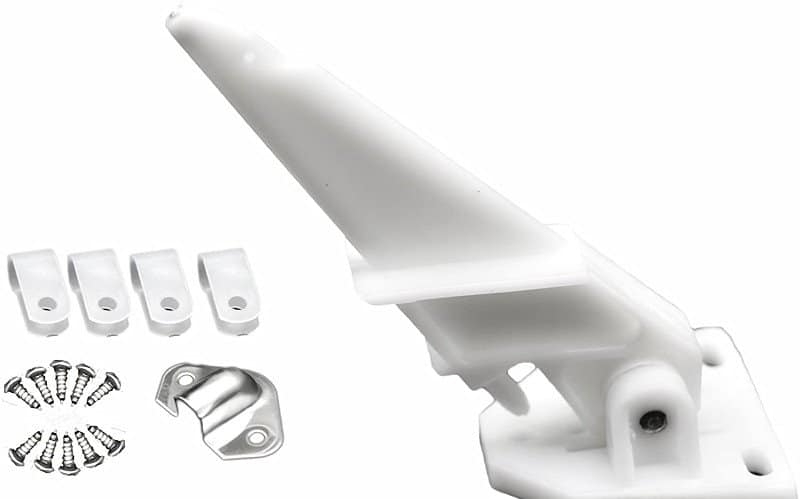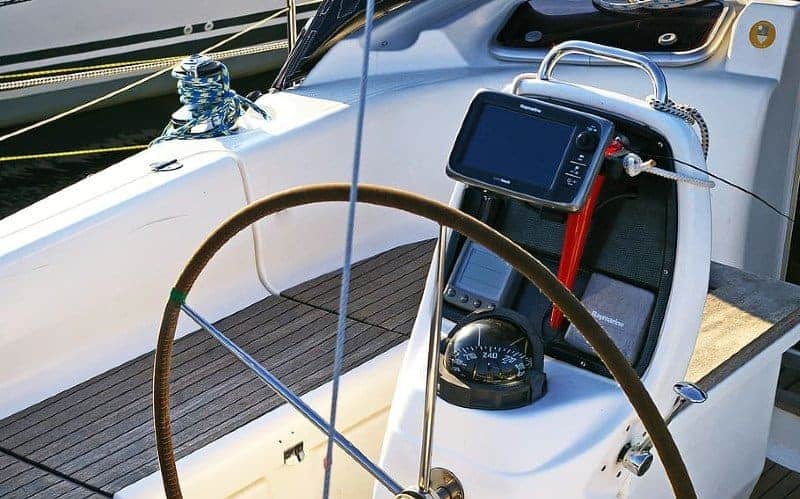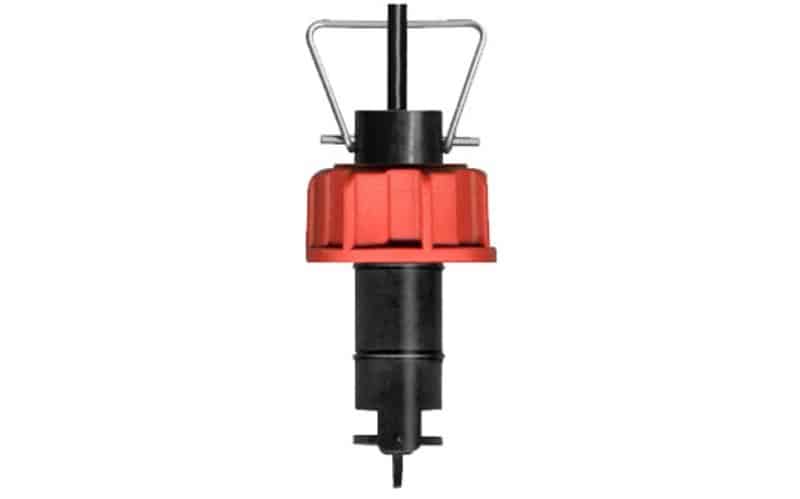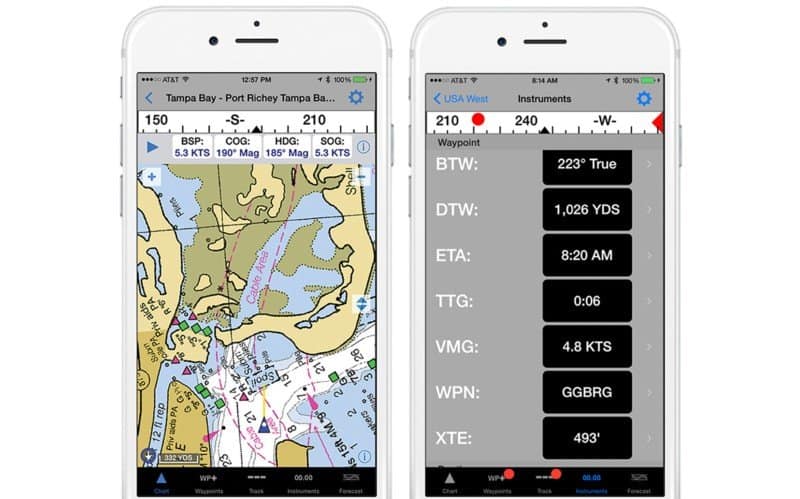How Does a Boat Speedometer Work?
Boat speedometers can get a little confusing. In some ways a boat speedometer works the same as a car speedometer. But it’s not exactly the same principles behind it. Since a boat does not have wheels, it can’t measure how fast they’re moving. Instead, your boat speedometer measures the speed of water travelling beneath it. That’s if it’s a more traditional boat speedometer.
There are actually several different ways that a boat speedometer works these days. A traditional, manual pitot tube speedometer and a GPS speedometer are the most common. An electromagnetic speed sensor is also an option. So when you ask how does a speedometer work on a boat, there is more than one answer.
How Does a Boat Speedometer Work – Manual or Pitot Tube Version
A manual boat speedometer relies on something called a pitot tube. This may also be called a pitometer. A pitot tube speedometer relies on tubes under the boat to help gauge speed. The tube goes through the boat’s hull and down below into the water. There are two holes in the tube. As you travel in the boat, water enters the tube through one hole. The speed of the water entering this hole is measured. The second hole measures the water pressure.
The water entering the tube forces air up the tube as well. The change in air pressure is measured by a gauge at the end of the tube on your dashboard. This in turn is able to estimate the boat’s speed. To put it simply, the speed of the water entering the pitot tube is compared to the air pressure. This is what produces the speed estimate for the boat.
As you increase the boat’s speed, the water pressure in the tube increases. That means that the air pressure also increases. That registers on the gauge as you go faster. Likewise, when you slow down, the water pressure decreases. The air pressure also decreases. You need to remember that the water itself has an effect on this reading. If you are on still water you will get a more accurate reading of your boat’s actual speed. If you’re travelling in a moving current, it will slightly alter the gauge reading. That means the speedometer is giving you an estimate of your speed, rather than a precise figure.
Boat speedometer accuracy has long been a controversial subject. Measurements made with pitot tube speedometers are notoriously incorrect. This is very much a ballpark figure when you read it. A number of boaters have compared GPS speedometer results with pitot tube results. The numbers can be off by as much as 15 miles per hour sometimes. That’s a pretty significant number when dealing with speed. Imagine if your car’s speedometer was plus or minus 15 miles per hour. You’d have a hard time explaining that to a police officer when you got pulled over.
That doesn’t mean measurements made by pitot tubes are always that inaccurate. Sometimes they may only be off by one or two miles per hour. The fact that it can be so close or so far from the mark is why you can only consider it an estimate.
The pitot tube was created by an engineer named Henri Pitot. It can be traced to the early 18th century in France. As you can see, it’s an ancient invention. That’s part of the reason is accuracy isn’t always ideal. It relies on less precise science than GPS. But it is also proven technology. If a satellite goes down, a pitot tube still works. Even aircraft rely on a type of pitot tube to measure speed.
How Does a Boat Speedometer Work – GPS Version
As you have seen, manual speedometers are not very accurate. They give you a good idea of your speed, but that’s it. If you want a speedometer that is 100% accurate, then you need a GPS speedometer. Just like your car GPS, these speedometers rely on satellite monitoring. As you move on the water, a satellite tracks your progress from space. That means not only is your position accurately tracked, your speed is tracked as well. This kind of speedometer is in no way affected by any kind of current.
How Does a Boat Speedometer Work – Electromagnetic Speed Sensor Version
An electromagnetic sensor is sometimes called an electromagnetic log or an EM log. The sensors are definitely more advanced than manual sensors. They measure speed when a conductor passes through an electromagnetic field. In this case, the conductor is the water that your boat is on. The sensor generates an electromagnetic field. The conductor passing through the field creates voltage which can be measured. That measurement gives you a speed reading as the voltage will increase along with the speed of the boat. Because this kind of sensor has no moving parts, it’s less prone to failures than a pitot tube. Certain water conditions can affect the reading. That means it may not be as accurate as GPS speedometers.
How Does a Boat Speedometer Work – Electric Paddle Wheel Version
Another popular type of boat speedometer is the electric paddle wheel speed sensor. This kind works by measuring the force of passing water that turns a paddle wheel. It’s very similar to measuring the rotation of tires in a car to determine speed. The problem with a paddle wheel speed sensor is it is vulnerable to outside elements. Weeds or debris can clog it and alter the reading or stop it from working completely. When working properly however a paddle wheel speed sensor gives accurate speed readings.
How Does a Boat Speedometer Work – Phone App Version
There are a number of boating apps you can download on your tablet or phone. Many of these offer exceptional navigation tools. They can monitor your speed over ground as well as your course. They can estimate your ETA, and suggest better routes to travel. They can point landmarks, approaching weather, almost everything you can think of. Apps like INavX and RaceLogic Vbox sport have proven to be very useful to our number of boaters. It all depends on what you’re trying to do on the water. Remember that these come with subscription fees, however. INavX costs $6.99 in the Apple store, for instance.
The Bottom Line
There are a lot of choices when it comes to boat speedometers. Knowing the speed of your boat is an important aspect of operating it. There are many cases where your boat must operate at a certain speed on the water. In the harbor or within certain distances to shore, speed limits must be observed. An accurate measurement of speed on your boat is therefore important.
The pitot tube speedometer is the most common one you’re going to find. You should definitely consider a GPS system if accuracy is important to you. Apps work just as well as actual GPS speedometer devices on your boat. That makes it a little more convenient. Whatever kind of speedometer you go with, make sure you’re following local regulations. You don’t want to operate your boat in a dangerous fashion if you don’t have to. Boat safety is everyone’s responsibility.
Categories: Boats
















